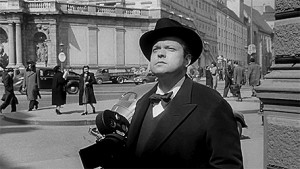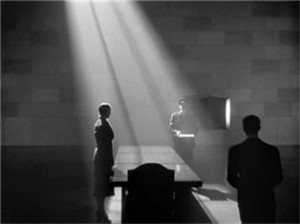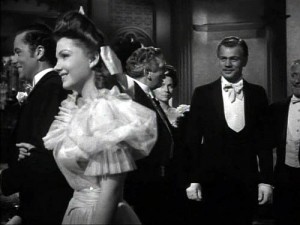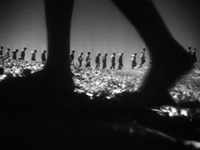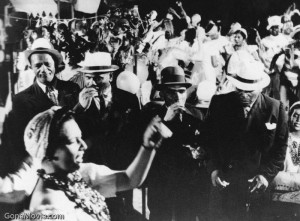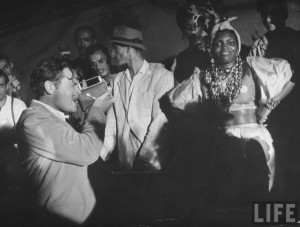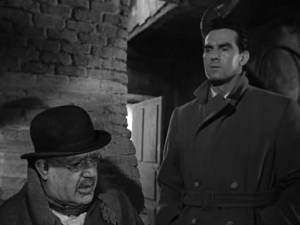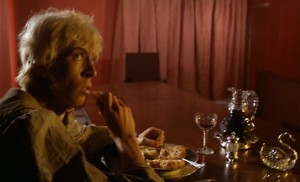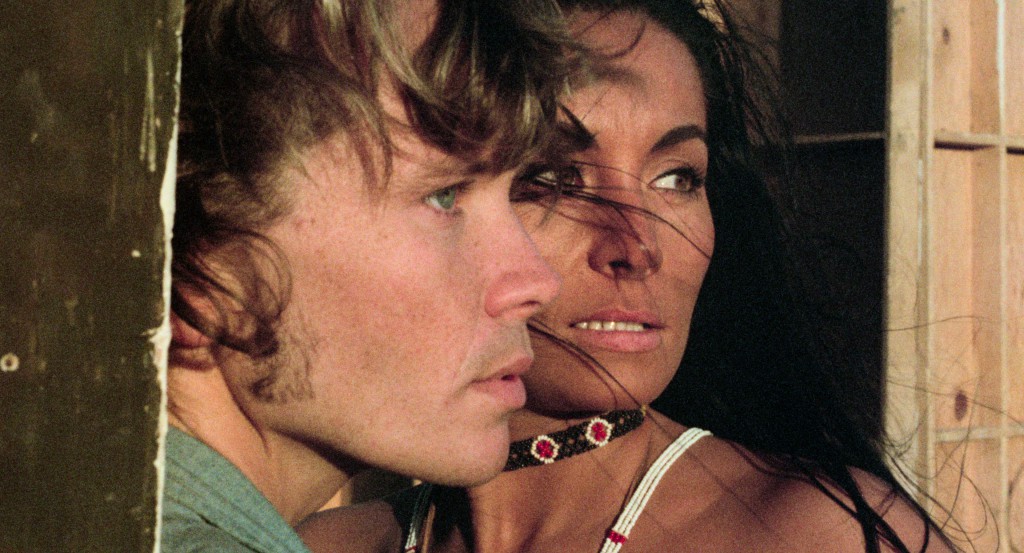Published in the Spanish newspaper El mundo as “El maverick impredecible” on May 1, 2015. — J.R.

Having some historical perspective on changing fashions in film taste is never easy, but it becomes necessary if one is to understand the fluctuating meanings of the career of Orson Welles. Just as one needs to recall a time in the early 20th century when the crime serials of Louis Feuillade such as Fantomas and Les Vampires were regarded with utter scorn by sophisticated cinephiles, and a time in the mid-20th century when Alfred Hitchcock was still considered an entertainer but not an artist, we have to consider that during the half-century constituting the career of Orson Welles, his audience swerved repeatedly back and forth between regarding him as a mainstream star and viewing him as an esoteric artist. Although the tendency to see him as a maverick has been constant, the issue of where he belongs as a maverick has never been entirely resolved.
Even before Citizen Kane, when at age 23 he appeared on the cover of Time magazine (1938) for his work in theater and as a radio actor, and shortly before he began a weekly radio series of his own, he already had the profile of a boy genius full of imagination and mischief, a reputation that was only enhanced about half a year later when he fooled part of his radio audience into believing, through an unorthodox adaptation of H.G. Welles’ The War of the Worlds, that the United States was being invaded by deadly Martians. But after this scandal ultimately won him an unprecedented Hollywood contract at RKO granting him full creative control, and a first feature released in 1941 that took full advantage of that freedom, his reputation as a maverick increasingly limited his options.
For a variety of reasons — including the fact that Citizen Kane ridiculed the most powerful press baron in the U.S., William Randolph Hearst, whose newspapers refused to carry ads for the film — the film failed at the box office. And Welles’ second feature, The Magnificent Ambersons — an adaptation of a novel by Booth Tarkington about the parallel decline of an aristocratic Midwestern family and the rise of the automotive industry — which was even more ambitious than Citizen Kane — was removed from his control and seriously mutilated by RKO as it was nearing completion, after Welles was persuaded by the U.S. government to travel to Brazil to make a documentary promoting closer relations between North and South America. At this point, Welles, still busy with multiple projects in film and radio, had already started an episodic documentary called It’s All True about the birth of jazz, a Mexican boy trained as a bullfighter, and a couple of other episodes. At this point he decided to drop the jazz episode and two of the other segments, substitute a segment about the Brazilian samba, and make the whole documentary about Latin America, including the Mexican episode (most of which by this time had already been shot by Norman Foster).
Although Welles left the U.S. with the understanding that he would be able to complete both projects (as well as a third feature, also directed by Foster, that Welles was producing and acting in, a spy thriller called Journey into Fear), RKO took advantage of his absence to assume final control over all three features, and then wound up cancelling It’s All True after virtually all the material for two Brazilian episodes had been shot. Although RKO spread stories about Welles going over budget and behaving irresponsibly, more recent research has suggested that Welles’ main “irresponsibility” was shooting a politically radical feature in which all the heroes were poor and nonwhite, while Welles’ rough cut of Ambersons, screened at a preview to mixed reactions while he was still working in Brazil, was hastily and brutally recut and partially reshot. And because both Ambersons and Journey into Fear in their altered states fared poorly at the box office, Welles’ commercial profile remained that of a “difficult” director for the remainder of his career — even though his next feature, The Stranger, made three years later, was the only one of his films that ever turned a profit on its first release. Welles made this relatively commercial thriller to prove he was a professional, yet this film is ironically remembered today as the least memorable of his Hollywood productions.
This is where Welles’ confused public reputation worked most to his disadvantage. Especially in the U.S., he was regarded chiefly as a failed or at least unreliable Hollywood director rather than as an adventurous independent filmmaker who sometimes managed to work with the facilities of Hollywood studios. While his genius was for being unpredictable as an artist, the same gift made him dangerous and “unbankable” in the minds of Hollywood producers. His three remaining Hollywood pictures — The Lady From Shanghai (1946), Macbeth (1948), and Touch of Evil (1958) — all lost money, and the last of these (and in some respects the best) wasn’t even screened for the American press.
In retrospect, however, It’s All True, if RKO had allowed it to be finished, would have been the first of his independent productions, in essence if not in sponsorship. The first one he actually completed was Othello (1952), financed largely with his acting fees in overseas productions, and the first feature of his since Citizen Kane where he retained final cut. (Although he edited two versions of Macbeth for Republic Pictures, the fact that he was obliged to cut and redub the second of these compromised his total control. Yet paradoxically, he also recut and redubbed his own Othello at his own instigation between its premiere in Cannes in 1952 and its U.S. release three years later.)
Welles had final cut on all of his remaining non-Hollywood features — Mr. Arkadin (1955), The Trial (1962), Chimes at Midnight (1966), The Immortal Story (1968), F for Fake (1973), and Filming Othello (1978) — except for the first of these, due to a falling out with his European producer. But alas, some of the DVD versions of both The Trial and The Immortal Story that have circulated differ from those final cuts.
When it comes to Welles’ unfinished Don Quixote, which he worked on intermittently over the last three decades of his life, it must be said that the posthumous version edited by Jesus Franco is even more of a travesty of Welles’ work than the release versions of The Magnificent Ambersons, The Lady from Shanghai, and Mr. Arkadin. Not all of this is Franco’s fault, because he wasn’t allowed to use any of the material shot for the film in Mexico with Patty McCormack, but unfortunately he compounded this handicap by incorporating footage from a 1964 Italian TV series shot by Welles that was quite separate in spite of its title, In the Land of Don Quixote. It is too soon to predict what might emerge later this year from the projected completion of The Other Side of the Wind, his unfinished portrait of another (fictional) maverick American director, played by John Huston. But we can at least expect to be startled by Welles’ unpredictability once again. At the very least, this promises to be Welles’ first feminist feature, and much else besides that.


